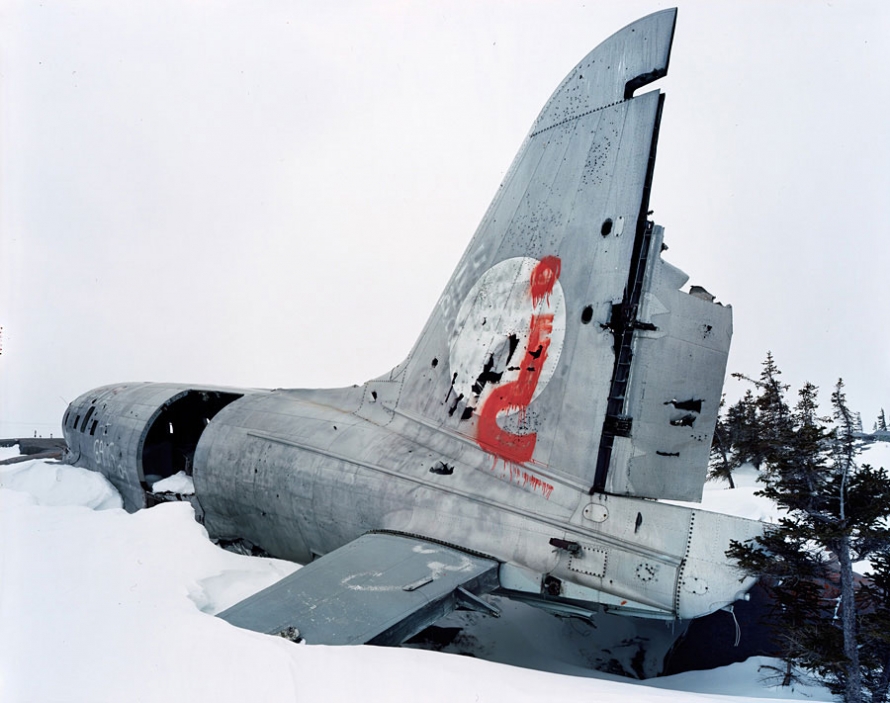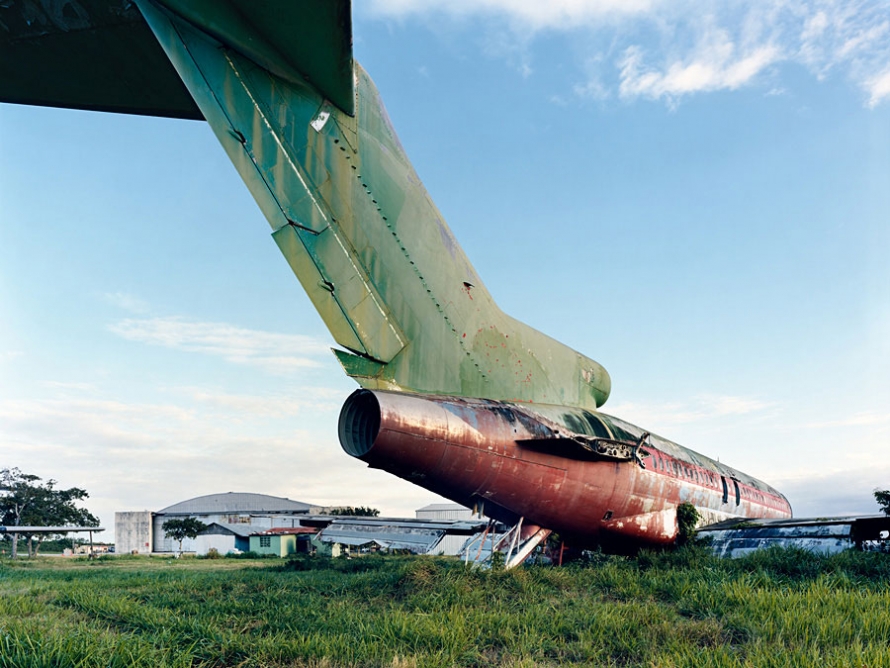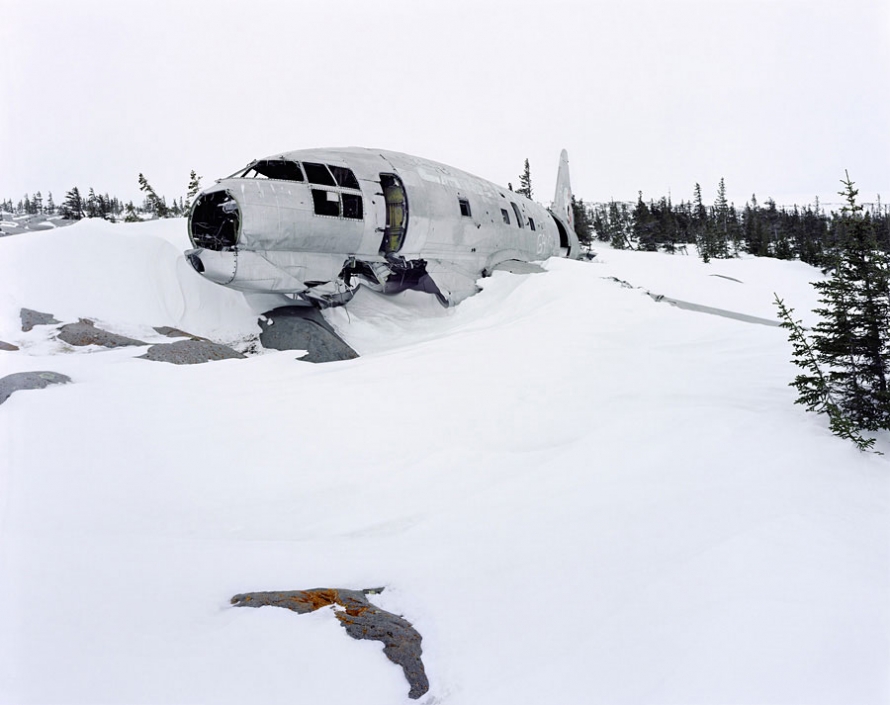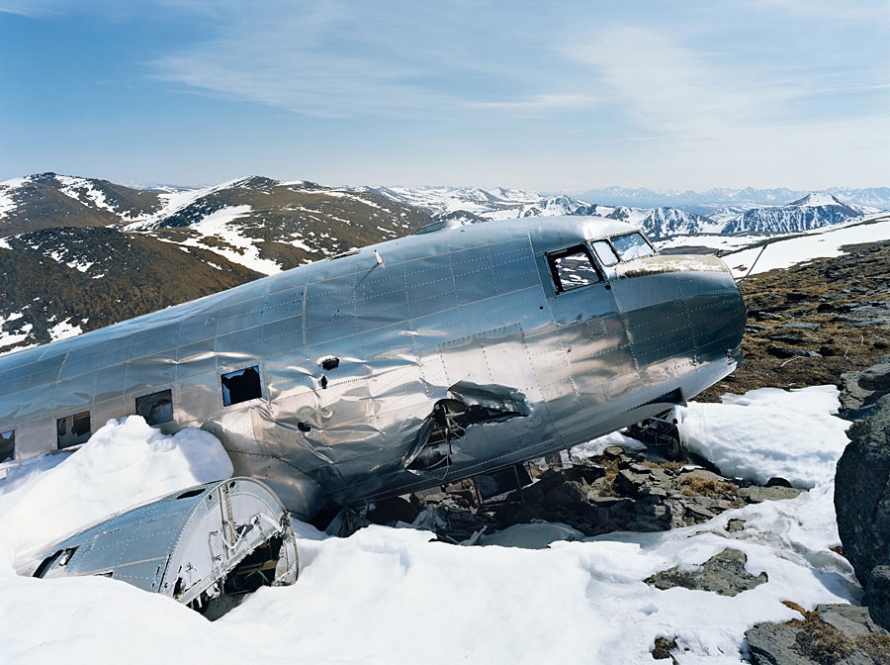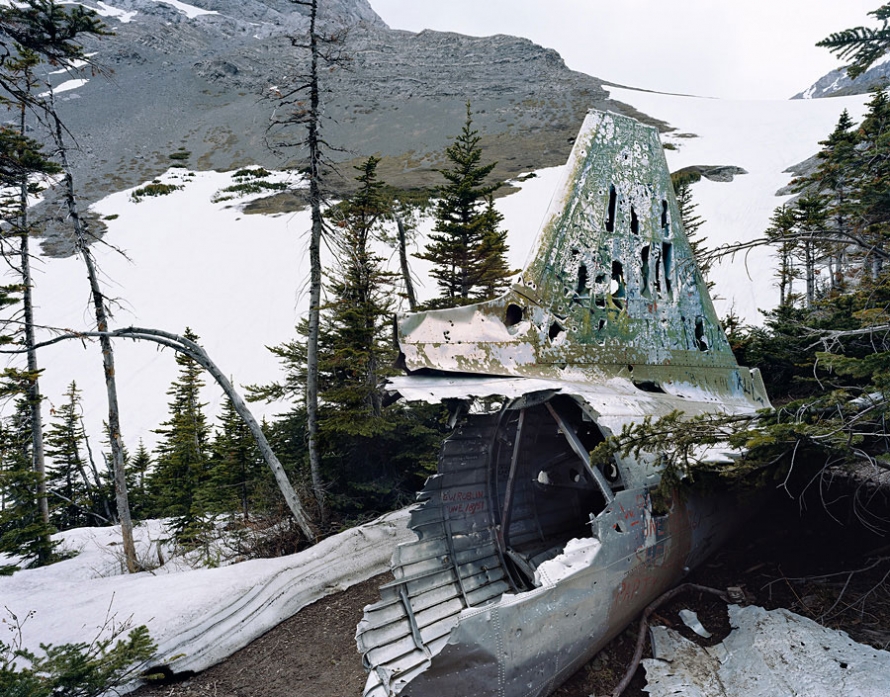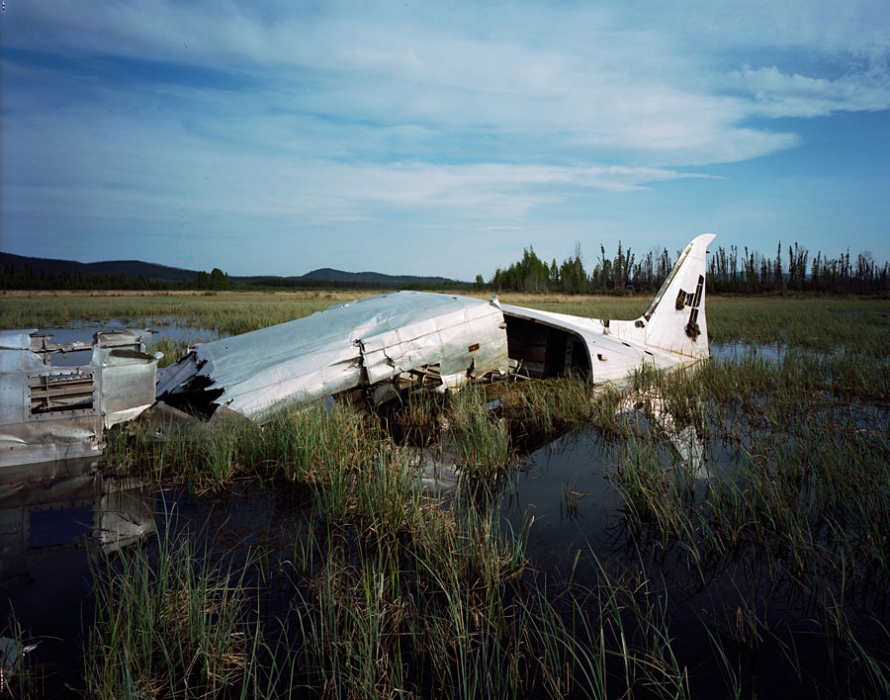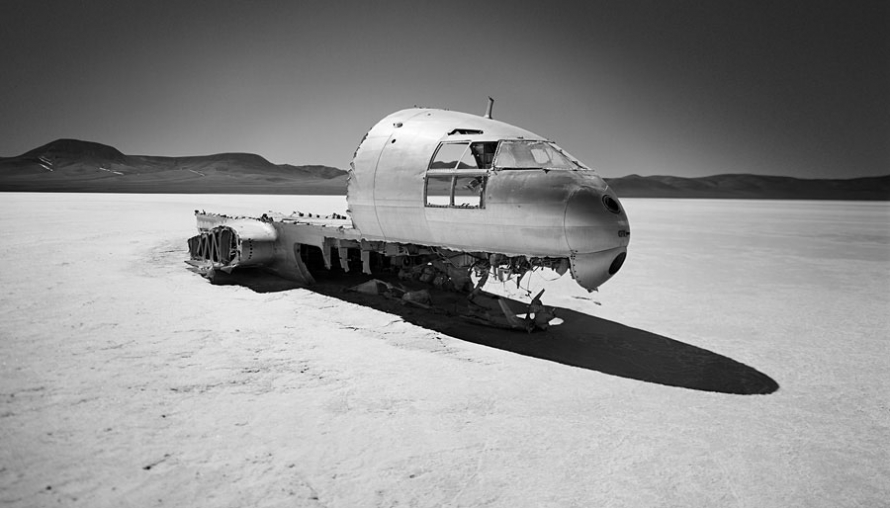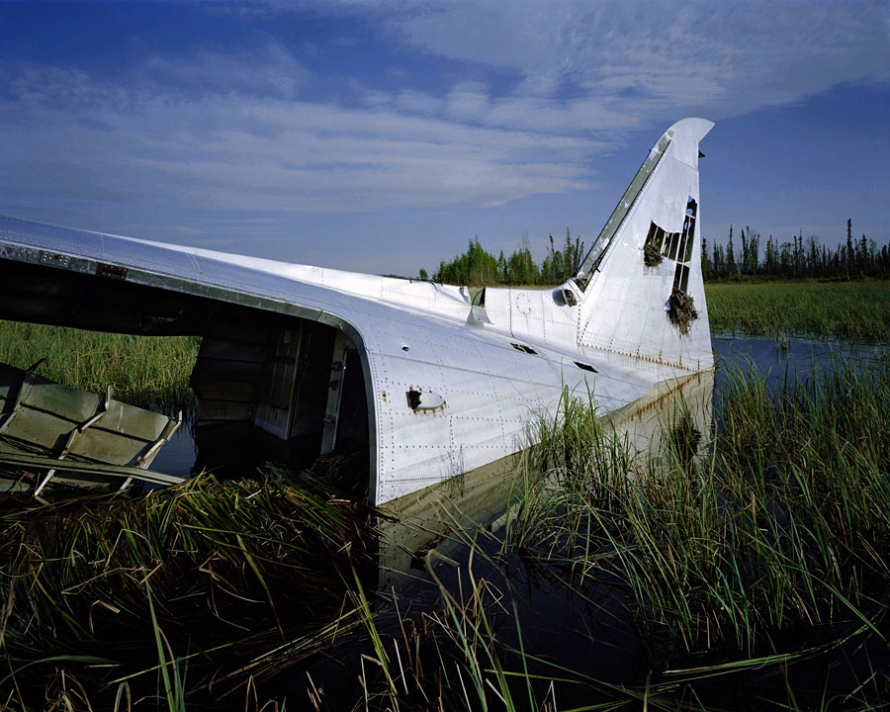Last year we featured Richard Mosse’s photographs of airport disaster simulations in a gallery that stoked both fear and fascination. In these new photos by Mosse, the wreckage of celebrated machines and technologies is slowly being absorbed by the natural world.
Born in Ireland, Richard Mosse earned his Postgraduate Diploma in Fine Art from Goldsmiths, University of London in 2005 and his MFA in Photography from Yale School of Art in 2008. His work has been exhibited at Tate Modern, the Barbican Centre, and Art Chicago. His work will be included in the upcoming Fotofest 2010 Biennial of Contemporary U.S. Photography, March 12 to April 25, 2010, in Houston.
Seeing how this is your second series of photographs of wrecked planes, I’ve got to ask, how do air travel and planes make you feel personally?
I love to fly, but at the same time I’m terrified of crashing, and feel guilty about the environmental damage that flying causes. This work is coming out of that ambivalence, the simultaneous attraction and repulsion.
How is that related to your artistic interest in the planes themselves?
That attraction and repulsion creates a kind of tension, something that I’m working through. Also, I’m drawn to the form of the airliner—its faceless, corporate qualities which represent, for me, the globalized future that we’ve chosen for ourselves.
How did you decide which locations to shoot? Did you have difficulty gaining access or reaching the destinations?
These photos are the result of months of online research; skimming forums, YouTube videos, Google Earth, and Flickr; emailing wreck chasers; and cold-calling bush pilots. I was looking for wrecks that had been ruined by the impact but had not entirely disintegrated, retaining a certain anthropomorphic sculptural quality. Because plane wrecks are immediately cordoned off and tidied up by the authorities, I had to locate wrecks that had crashed so far from civilization that there was a good chance that they would still be there.
It seems somehow fitting that many of these wrecks and wreckage are in pristine natural settings. Did you find it poignant or surprising to find them there?
Since this was generally a project of re-photographing crash sites that others had already visited, I knew basically what the scenery would look like in advance. But after a long and sometimes difficult journey out to the wreck, I was amazed by the natural beauty of many of these locations. I was often struck by the fact these were very beautiful places to die.
Do you feel like the wreckage somehow becomes a part of nature as it deteriorates?
The shattered carapace of the plane has already been smashed against the earth and rocks, becoming almost a part of the landscape in an instant. And then, after 50 years in some cases, it has sunk into the earth over time, its aluminum shell eroded by the elements. Trees and bushes grow through the wreck, and in some cases I’ve even found animals nesting in the body of the plane.
I see a lot of narrative potential in the contrast between nature and machine, and in the loss or breakdown of the structure. Are you interested in the individual stories of these locations and structures?
I’m trying to decontextualize the form from the narrative in order to unlock the viewer’s imagination. There’s a risk of getting bogged down in the scenario of each crash, because those stories are irresistible. But if you look only at this form in the landscape, it’s possible to transcend the particulars, and think in a more open-ended way about some of the themes at stake.
When I interviewed you about your Airside photos of plane-fire simulations, you told me, “One of the things that I keep returning to is the problems we have with history, since it’s always written from the victor’s point of view.” In these images, we’re seeing “The Fall,” the mechanical and institutional failures that cause destruction and decay—how does this offer a different version of history?
I suppose it lets us see what the world might look like after we’ve wiped ourselves out. In that case, this would be a history written from the victor’s point of view—that of nature.
